Yazhou Tu
Regional Weather Variable Predictions by Machine Learning with Near-Surface Observational and Atmospheric Numerical Data
Dec 11, 2024



Abstract:Accurate and timely regional weather prediction is vital for sectors dependent on weather-related decisions. Traditional prediction methods, based on atmospheric equations, often struggle with coarse temporal resolutions and inaccuracies. This paper presents a novel machine learning (ML) model, called MiMa (short for Micro-Macro), that integrates both near-surface observational data from Kentucky Mesonet stations (collected every five minutes, known as Micro data) and hourly atmospheric numerical outputs (termed as Macro data) for fine-resolution weather forecasting. The MiMa model employs an encoder-decoder transformer structure, with two encoders for processing multivariate data from both datasets and a decoder for forecasting weather variables over short time horizons. Each instance of the MiMa model, called a modelet, predicts the values of a specific weather parameter at an individual Mesonet station. The approach is extended with Re-MiMa modelets, which are designed to predict weather variables at ungauged locations by training on multivariate data from a few representative stations in a region, tagged with their elevations. Re-MiMa (short for Regional-MiMa) can provide highly accurate predictions across an entire region, even in areas without observational stations. Experimental results show that MiMa significantly outperforms current models, with Re-MiMa offering precise short-term forecasts for ungauged locations, marking a significant advancement in weather forecasting accuracy and applicability.
Securing the Future: Exploring Privacy Risks and Security Questions in Robotic Systems
Sep 16, 2024Abstract:The integration of artificial intelligence, especially large language models in robotics, has led to rapid advancements in the field. We are now observing an unprecedented surge in the use of robots in our daily lives. The development and continual improvements of robots are moving at an astonishing pace. Although these remarkable improvements facilitate and enhance our lives, several security and privacy concerns have not been resolved yet. Therefore, it has become crucial to address the privacy and security threats of robotic systems while improving our experiences. In this paper, we aim to present existing applications and threats of robotics, anticipated future evolution, and the security and privacy issues they may imply. We present a series of open questions for researchers and practitioners to explore further.
* 11 pages, Conference Paper
An Object Detection based Solver for Google's Image reCAPTCHA v2
Apr 07, 2021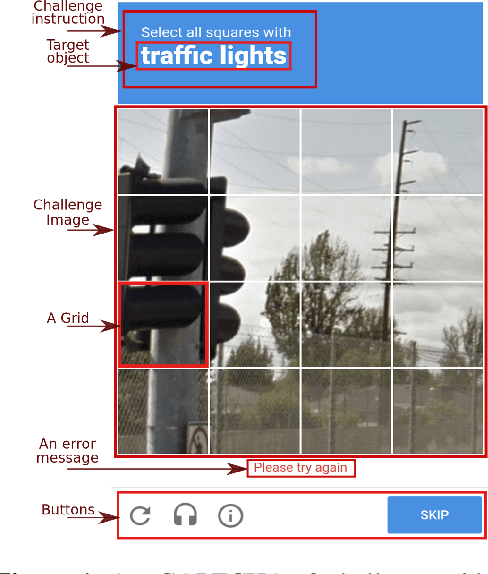
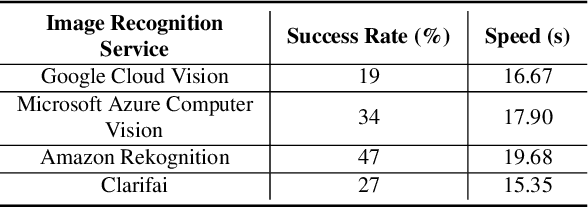
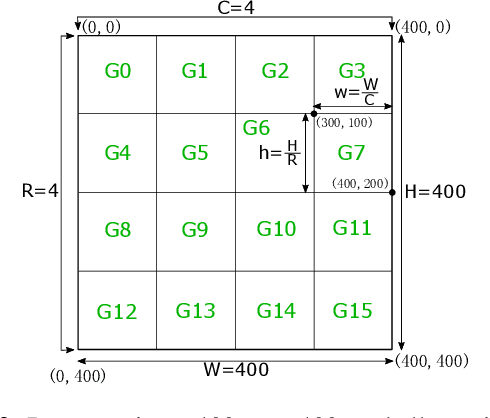

Abstract:Previous work showed that reCAPTCHA v2's image challenges could be solved by automated programs armed with Deep Neural Network (DNN) image classifiers and vision APIs provided by off-the-shelf image recognition services. In response to emerging threats, Google has made significant updates to its image reCAPTCHA v2 challenges that can render the prior approaches ineffective to a great extent. In this paper, we investigate the robustness of the latest version of reCAPTCHA v2 against advanced object detection based solvers. We propose a fully automated object detection based system that breaks the most advanced challenges of reCAPTCHA v2 with an online success rate of 83.25%, the highest success rate to date, and it takes only 19.93 seconds (including network delays) on average to crack a challenge. We also study the updated security features of reCAPTCHA v2, such as anti-recognition mechanisms, improved anti-bot detection techniques, and adjustable security preferences. Our extensive experiments show that while these security features can provide some resistance against automated attacks, adversaries can still bypass most of them. Our experimental findings indicate that the recent advances in object detection technologies pose a severe threat to the security of image captcha designs relying on simple object detection as their underlying AI problem.
Stacked LSTM Based Deep Recurrent Neural Network with Kalman Smoothing for Blood Glucose Prediction
Jan 18, 2021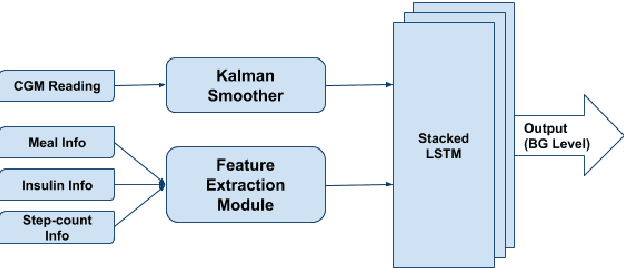
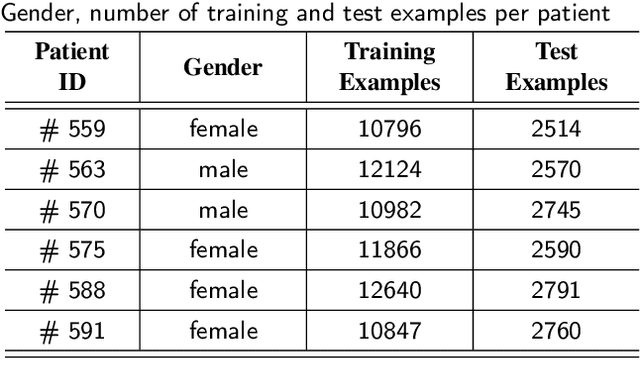
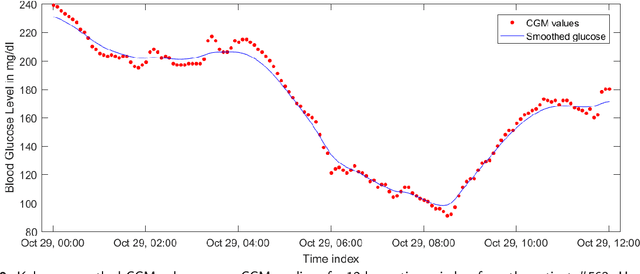
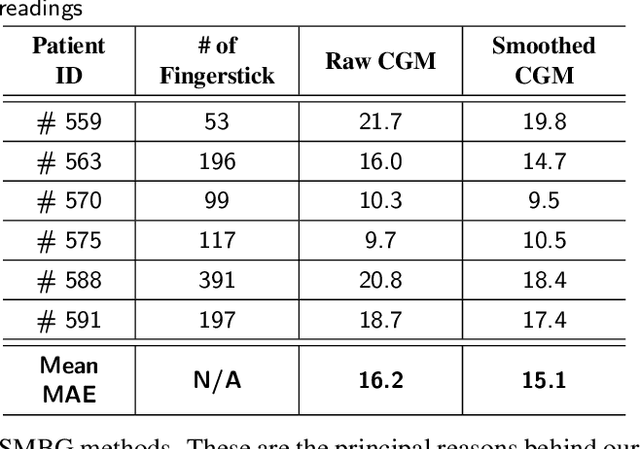
Abstract:Blood glucose (BG) management is crucial for type-1 diabetes patients resulting in the necessity of reliable artificial pancreas or insulin infusion systems. In recent years, deep learning techniques have been utilized for a more accurate BG level prediction system. However, continuous glucose monitoring (CGM) readings are susceptible to sensor errors. As a result, inaccurate CGM readings would affect BG prediction and make it unreliable, even if the most optimal machine learning model is used. In this work, we propose a novel approach to predicting blood glucose level with a stacked Long short-term memory (LSTM) based deep recurrent neural network (RNN) model considering sensor fault. We use the Kalman smoothing technique for the correction of the inaccurate CGM readings due to sensor error. For the OhioT1DM dataset, containing eight weeks' data from six different patients, we achieve an average RMSE of 6.45 and 17.24 mg/dl for 30 minutes and 60 minutes of prediction horizon (PH), respectively. To the best of our knowledge, this is the leading average prediction accuracy for the ohioT1DM dataset. Different physiological information, e.g., Kalman smoothed CGM data, carbohydrates from the meal, bolus insulin, and cumulative step counts in a fixed time interval, are crafted to represent meaningful features used as input to the model. The goal of our approach is to lower the difference between the predicted CGM values and the fingerstick blood glucose readings - the ground truth. Our results indicate that the proposed approach is feasible for more reliable BG forecasting that might improve the performance of the artificial pancreas and insulin infusion system for T1D diabetes management.
 Add to Chrome
Add to Chrome Add to Firefox
Add to Firefox Add to Edge
Add to Edge